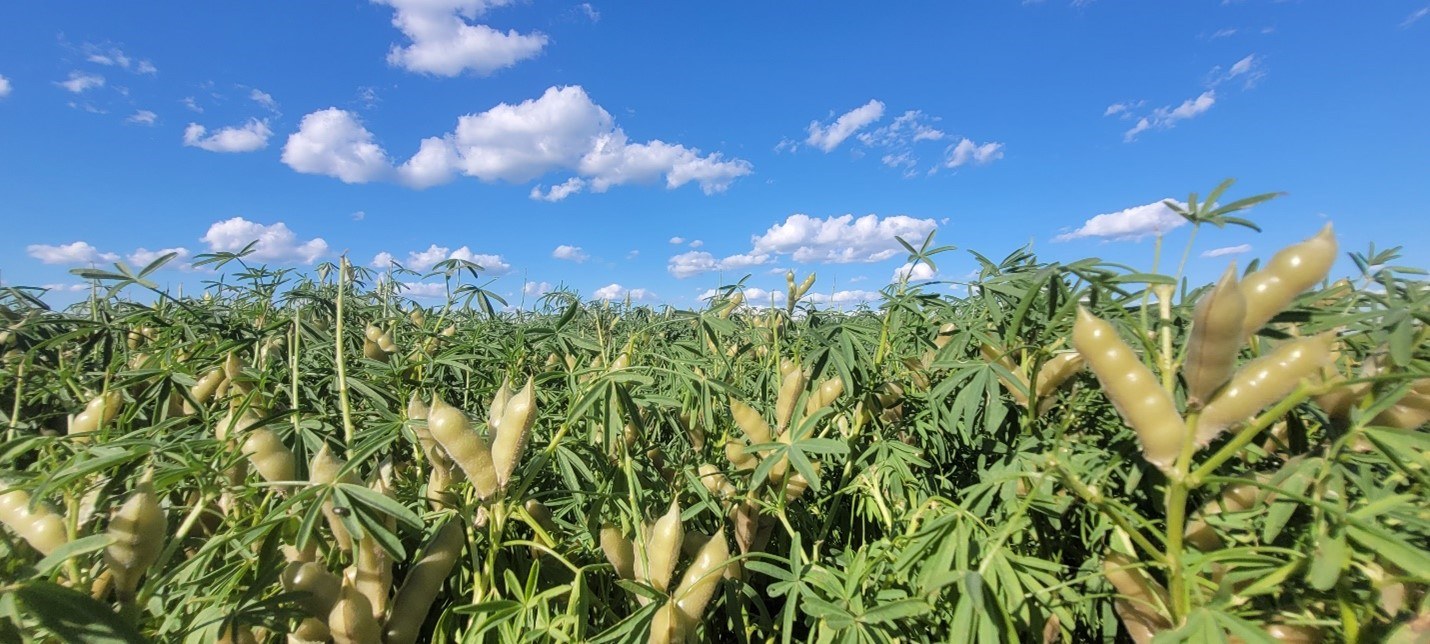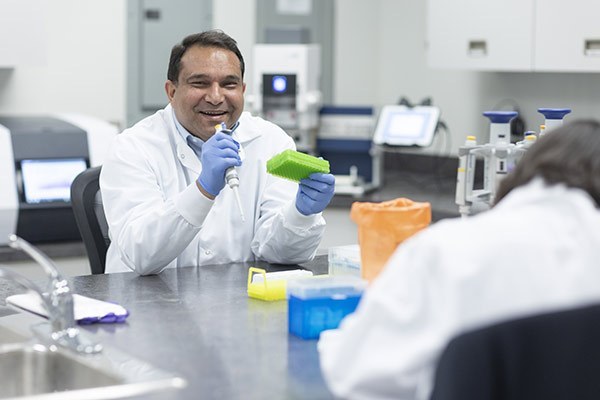New crops help secure Canada’s food supply chain
- Posted:

When many think about securing Canada’s food supply chain, they often think about the finished foods and beverages that make their way to grocery store shelves across the country. But the work to ensure we have a strong, sustainable domestic food source starts long before that, at the crop development stage.

“Given the ever-increasing trends in plant-based foods, it is important to continue the research to seek new protein crops and find ways of maximizing their utilization for zero-waste ecosystem in plant-based products,” Lupin Platform Inc. CEO Tristan Choi said. “Anytime there is an increase in the number of high-protein crop choices to grow and process in Canada is a positive. Global processing companies are now recognizing the numerous benefits of being situated in close proximity to the raw product source versus importing whole seed and are setting up infrastructure in Canada.”
Lupin Platform has an ongoing project with PURIS, Lumi Foods, and Hensall Co-op, with a co-investment from Protein Industries Canada, to increase the production and processing of lupin for high-valued ingredients and food in Canada. Lupin is proving to be a promising crop for the plant-based sector, with its nitrogen-fixing characteristics, high protein and dietary fibre, and resistance to Aphanomyces, a deadly Root Rot disease which is commonly found in other legume types such as peas and lentils.
So far, Choi said, lupin flour and lupin protein isolate have been particularly functional in keto-friendly bakery and pasta products for those who are looking for high-protein and low-carb diet, as well as dairy and egg alternatives. He expects the Lupin Platform team will expand on these functional uses as it continues its research into the crop.
“On a research side, we have been experiencing a high level of cooperation and willingness to work on lupin by those in the agricultural community in both breeding, agronomics and value-added processing, but as it is a new crop to Canada there is very little expertise in the crop kind,” he said. “The collaboration among commercial seed growers, ingredient producers, and food centres and research kitchens is very much needed to produce high-yielding crops for specific ingredients and breed out antinutritional factors and undesirable flavours in processed ingredients within the zero-waste full eco cycle.”
Such collaboration has been a significant contributor in the development of other new crops within the sector, as well. While hemp isn’t as new to Canada as lupin, it’s seeing a significant increase in both acres and use within the plant-based sector, thanks in large part to efforts to increase its functionality as a protein ingredient.

“Canola, wheat and other crops, [their protein content] was compromised because the desirable trait at that time was oil and starch production, and also looking for the yield,” NRGene General Manager Masood Rizvi said. “Increasing the current portfolio of the crop will provide diverse plant-based sources for farmers and also for processors.”
Similar to the Lupin Platform, NRGene is part of a consortium of partners working to increase hemp’s functionality as an ingredient in plant-based foods. With a co-investment from Protein Industries Canada, the company is working with Farmer’s Business Network Canada, Pulse Genetics and Manitoba Harvest to increase the protein content, and improve the starch content and texture of hemp and peas as ingredients, in an effort to increase their use along the plant-based value chain.
Rizvi expects this will lead to benefits across the value chain, from farmers right through to food manufacturers.
“This will result in generating an improved variety that will be grown and processed in Canada, enabling us to give a better solution for the meat substitute product,” he said. “It could help make industrial hemp a rotational crop, in the future. This is also one of the things we’re looking for, which is more crop choices for farmers.”
Plenty of progress has been made in improving the functionality of both hemp and lupin, but Rizvi and Choi agreed that more work needs to be done to fully build out Canada’s high-protein crop options. While this partly comes down to ensuring the proper infrastructure and programs are in place to support the right research, it’s also a matter of utilizing technology in new ways to both achieve our climate goals and research crops that the plant-based sector may currently be under-utilizing.
“We have so many other crops,” Rizvi said. “One of the crops that could be very valuable for Canada is quinoa, for instance. It’s drought-tolerant, it doesn’t require a lot of water to grow, and it’s a very under-utilized crop.”
Once fully utilized, these new crops—from lupin to hemp to anything new that may come along—can help achieve Canada’s goals, including meeting the growing global demand for protein while reducing our sector’s net zero emissions.
“It is important we integrate zero-waste processing for these new Canadian crops to reduce food waste and negative environmental impacts,” Choi said. “Plant protein processors should continue to find new uses for protein processing by-products, starch, fibre, oil etc., and integrate processed water treatment to allow for re-use.”
